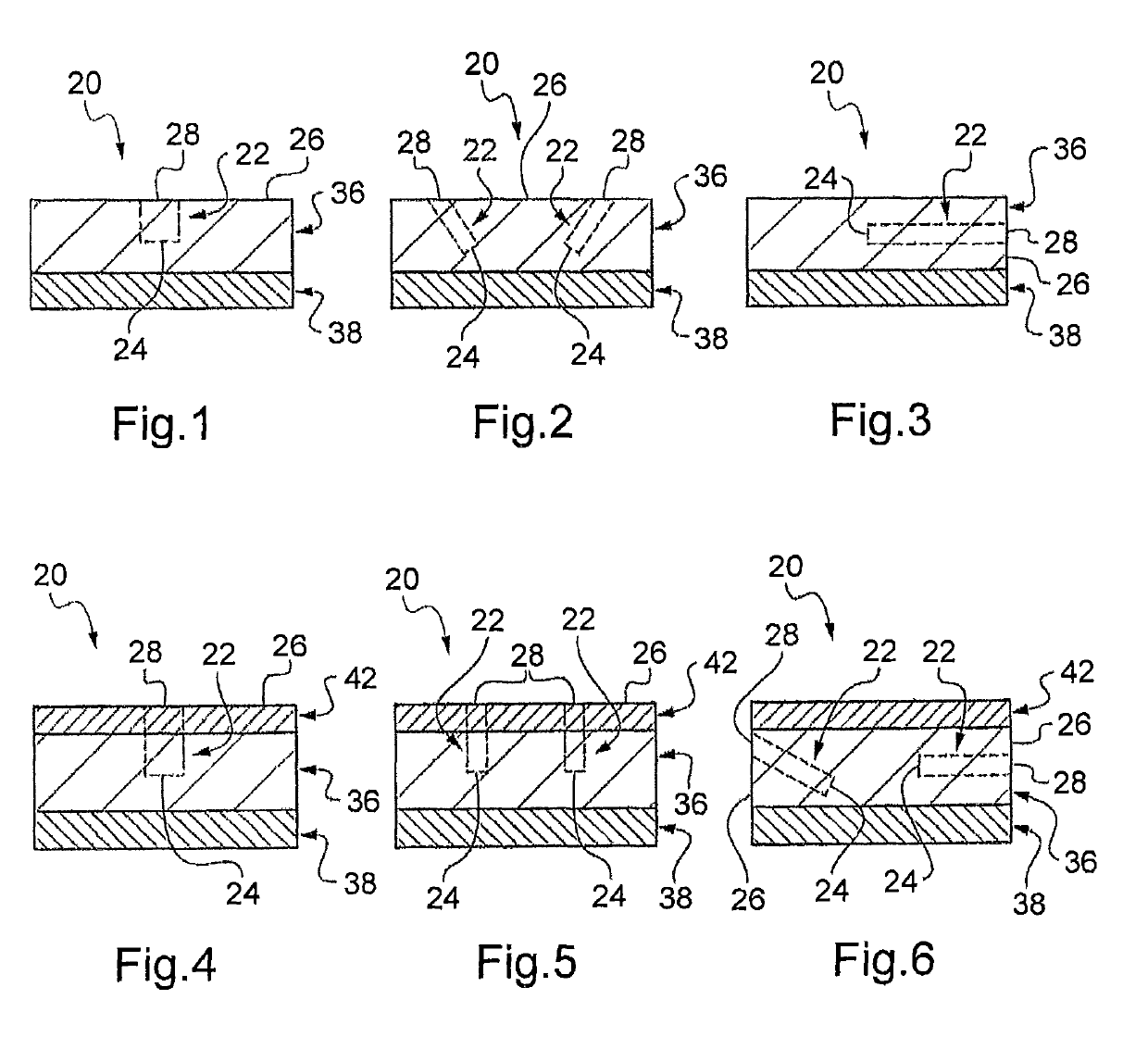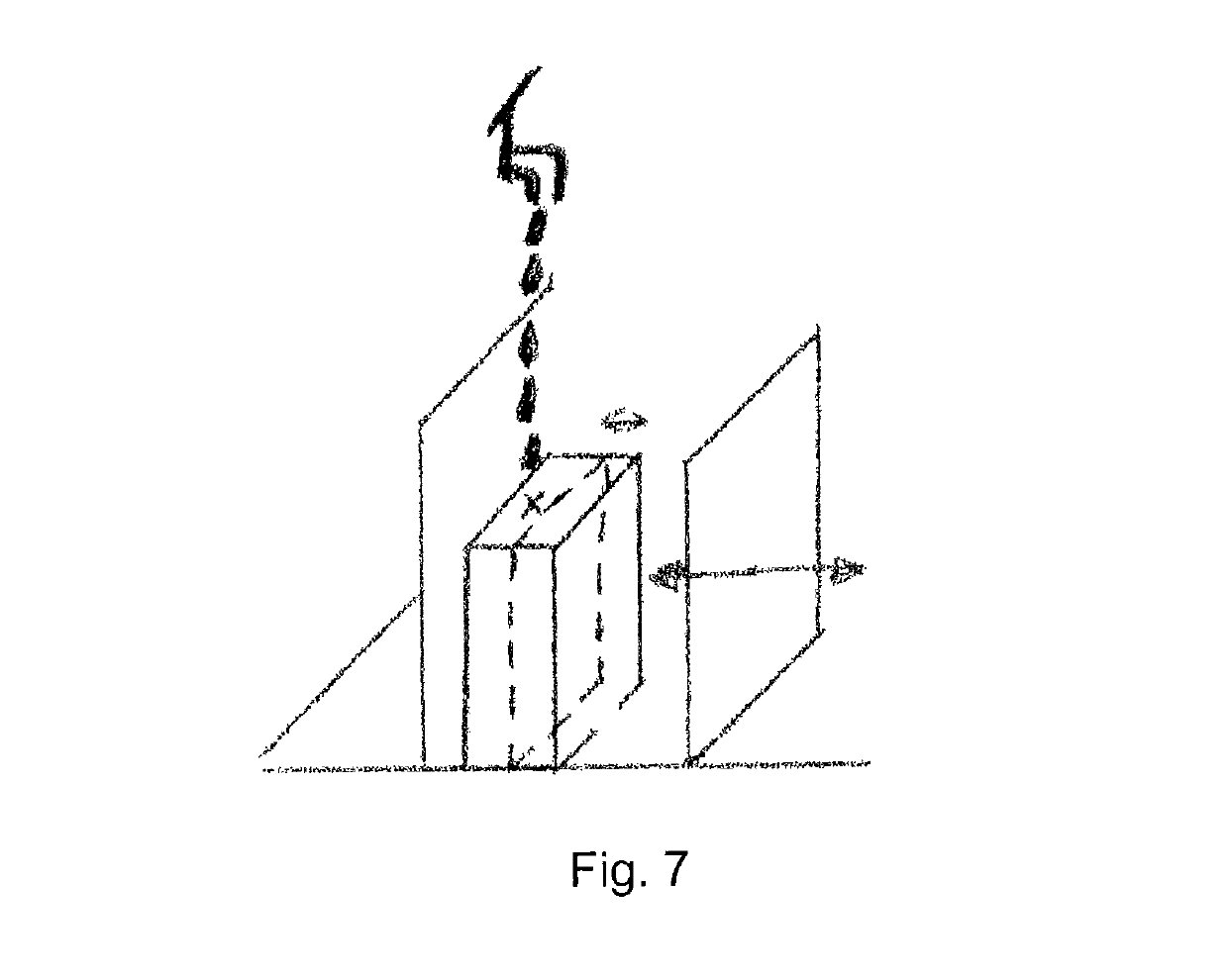Sponge having an open cavity
a sponge and cavity technology, applied in the field of sponges, can solve the problems of foam formation, excessive loss of detergent liquid before being used, and user overdose of detergent products,
- Summary
- Abstract
- Description
- Claims
- Application Information
AI Technical Summary
Benefits of technology
Problems solved by technology
Method used
Image
Examples
example 1
Sponge Production According to the Invention
[0092]Other features and advantages of the invention will appear upon reading other embodiments of the invention, provided as an example and in reference to the appended drawings.
[0093]One example of a sponge according to the invention and made up of several layers is illustrated as follows:[0094]a first layer and a second layer glued to each other, the bottom of the cavity being situated in the first layer;[0095]the opening is situated on a free surface of the first layer;[0096]a third layer glued to the first layer, the first, second and third layers forming a sandwich structure;[0097]the opening is situated on the third layer;[0098]the second layer and / or the third layer, if applicable, are made from an abrasive material;[0099]the first layer is made from a porous material and includes closed pores, preferably between 3% and 5% closed pores;[0100]the first layer is hydrophilic;[0101]the first layer is made from polyurethane foam;[0102]t...
example 2
A Protocol for Evaluating the Foaming Power of a Sponge
[0124]The test described below makes it possible to compare the foaming power of sponges that are impregnated with a same quantity of a same detergent.
[0125]The test is carried out using a compression device made up of two parallel walls between which the sponge to be tested is placed and whereof one wall is movable so as to compress the sponge in the direction of the thickness at a compression rate set at 50% of the initial thickness. One of the two walls is pierced with holes making it possible to discharge the liquid in compression mode. FIG. 7 diagrams the assembly used for the test.
[0126]At the beginning of the test, the sponge is positioned upright on a horizontal bottom (sink, for example) provided with a water outlet, and one of its main faces remains alongside the fixed wall of the press during the test. The side faces of the sponge are free.
[0127]The sponge to be tested is first impregnated with a reference detergent. ...
PUM
| Property | Measurement | Unit |
|---|---|---|
| distance | aaaaa | aaaaa |
| distance | aaaaa | aaaaa |
| volume | aaaaa | aaaaa |
Abstract
Description
Claims
Application Information
 Login to View More
Login to View More - R&D
- Intellectual Property
- Life Sciences
- Materials
- Tech Scout
- Unparalleled Data Quality
- Higher Quality Content
- 60% Fewer Hallucinations
Browse by: Latest US Patents, China's latest patents, Technical Efficacy Thesaurus, Application Domain, Technology Topic, Popular Technical Reports.
© 2025 PatSnap. All rights reserved.Legal|Privacy policy|Modern Slavery Act Transparency Statement|Sitemap|About US| Contact US: help@patsnap.com


